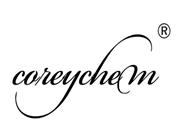| Chemical Properties |
clear oily liquid |
| Uses |
In antifreeze solution for sprinkler systems, water seals for gas tanks, etc. (water with 40% diethylene glycol freezes at -18°; with 50% at -28°); as lubricating and finishing agent for wool, worsted, cotton, rayon, and silk; as solvent for vat dyes; in composition corks, glues, gelatin, casein, and pastes to prevent drying out. |
| General Description |
A colorless liquid. Denser than water. Contact may slightly irritate skin, eyes and mucous membranes. May be slightly toxic by ingestion. Used to make other chemicals. |
| Air & Water Reactions |
Slightly soluble in water. |
| Reactivity Profile |
Diethylene glycol is incompatible with strong oxidizing agents. Diethylene glycol is also incompatible with strong bases. Diethylene glycol can react with sulfuric acid and other dehydrating agents, nitric acid, oxygen, hydrogen peroxide, perchloric acid and strong acids. Mixtures with sodium hydroxide decompose exothermically when heated to 446° F. |
| Health Hazard |
Ingestion of large amounts may cause degeneration of kidney and liver and cause death. Liquid may cause slight skin irritation. |
| Fire Hazard |
Diethylene glycol is combustible. |
| Safety Profile |
Moderately toxic to humans by ingestion. Poison experimentally by inhalation. Moderately toxic by ingestion and intravenous routes. Questionable carcinogen with experimental carcinogenic,tumorigenic, and teratogenic data. An eye and human skin irritant. Combustible when exposed to heat or flame; can react with oxidning materials. To fight fire, use alcohol foam, water, Con, dry chemical. Mixtures with sodium hydroxide decompose exothermically when heated to 230℃ and release explosive hydrogen gas. When heated to decomposition it emits acrid smoke and irritating fumes. See also GLYCOL ETHERS. |

 China
China







